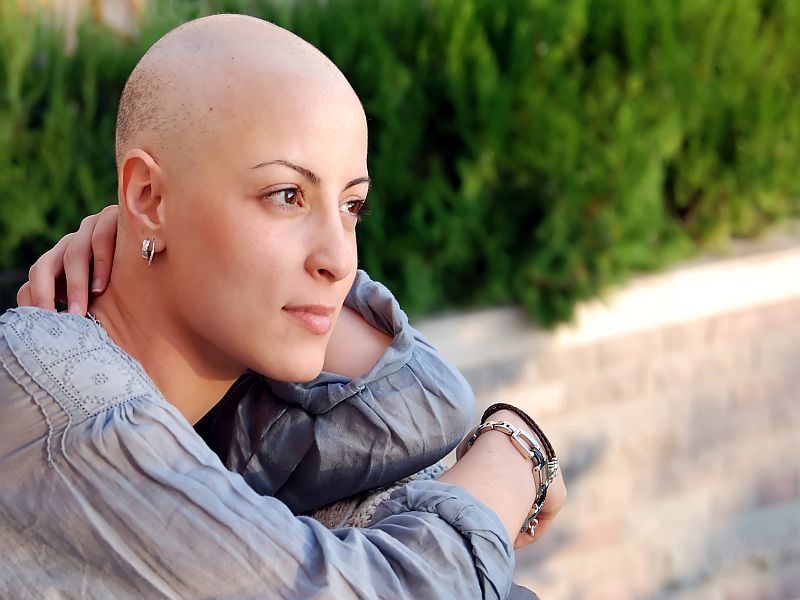

U.S. Cancer Death Rate Continues to Fall
But more cases are expected as baby boomers age, report saysThursday, September 14, 2017

THURSDAY, Sept. 14, 2017 (HealthDay News) -- More Americans are surviving cancer than ever before, but as the population ages, even more will develop the disease.
That's the good and bad news from the 2017 Cancer Progress Report from the American Association for Cancer Research, released Wednesday.
According to the report, the cancer death rate dropped 35 percent among children and 25 percent among adults from 1991 to 2014. That translates to slightly more than 2 million fewer cancer deaths.
On the flip side, new cancer diagnoses are predicted to rise from nearly 1.7 million this year to 2.3 million in 2030, said the association's president, Dr. Michael Caligiuri.
And this year alone, more than 600,000 Americans are predicted to die from cancer, according to the report.
Caligiuri said the increase in cancer cases is simply a consequence of more people living longer. As the report noted, 53 percent of U.S. cancer diagnoses occur among those aged 65 and older, and that population segment is expected to grow from about 49 million in 2016 to just over 74 million in 2030.
"The longer people live, the higher the incidences of cancer are going to be," Caligiuri said.
"The longer you live, the more likely are the chances for serious genetic mutations that cause cancer, and the weaker your system is in repairing your DNA when you do have those genetic changes," he explained.
Dr. Anthony D'Amico is a professor of radiation oncology at Harvard Medical School in Boston. He said, "The most likely explanation for the progress in cancer survival is a combination of advances in cancer treatment coupled with early detection through screening."
The AACR report noted that death rates for many of the most commonly diagnosed cancers in the United States -- including breast, colorectal, lung and prostate cancer -- have been declining for more than a decade. But deaths from other forms of cancer -- brain, liver and uterine cancer -- have been increasing.
And progress has not benefited every American equally, the researchers noted. Disparities in cancer care continue between whites and blacks, the insured and uninsured, the poor and the elderly.
But there is progress in treatment. Between August 2016 and July 2017, nine new anticancer drugs were approved by the U.S. Food and Drug Administration, the report said. In addition, the FDA approved the use of eight existing drugs for fighting new cancers.
Two of the new drugs are immunotherapeutics, called checkpoint inhibitors. These treatments increase survival and improve the quality of life for patients with many types of cancer.
Progress was also seen in drugs that target specific cancer molecules. In fact, seven of the new drugs do just that, the researchers said.
The FDA also approved a new optical imaging agent to help doctors see brain tumors and more accurately guide their removal.
The keys to more progress in preventing and curing cancer include basic science to understand the biology of cancers, Caligiuri said, then making those findings relevant to cancer treatment through animal and early human trials. Next comes testing on many people to see how safe and effective these new treatments are, he added.
In addition, more studies are needed to better understand the risks for cancer and to develop ways to lower those risks. These include lifestyle changes -- such as not smoking, eating a healthy diet and exercising -- and screening to detect cancer early.
On the cancer prevention side, cigarette smoking declined by nearly 39 percent from 2000 to 2015, which should mean fewer cases of lung cancer in the future, the report said.
The researchers also said that, in the future, nearly all cases of cervical cancer and many cases of oral and anal cancer could be prevented if girls and boys received the human papillomavirus (HPV) vaccine.
Yet, only 63 percent of girls and fewer than 50 percent of boys had received at least one dose of HPV vaccine in 2015, the study reported.
According to D'Amico, "There is still a lot more to do, but we are going in the right direction in terms of discovery, screening and biology."
Cancer is not an inexpensive disease. Direct medical costs in 2014 were nearly $88 billion, the report said. This does not include the indirect costs, such as lost productivity from cancer-related care and death.
Yet the U.S. National Institutes of Health (NIH) received only $30 billion in funding for 2014, Caligiuri said. And of that total, only about $5 billion went to the U.S. National Cancer Institute.
Not surprisingly, Caligiuri believes that both the NIH and the FDA need more money to spend on cancer research and treatment if further progress in the fight against cancer is going to happen.
"The limiting step for more progress against this beast called cancer is funding," Caligiuri said. "The data clearly show that when we have the funding, we can make phenomenal progress."
SOURCES: Michael Caligiuri, M.D., president, American Association for Cancer Research, director, Ohio State University Comprehensive Cancer Center, Columbus; Anthony D'Amico, M.D., Ph.D., professor, radiation oncology, Harvard Medical School, Boston; Sept. 13, 2017, American Association for Cancer Research, AACR Cancer Progress Report 2017: Harnessing Research Discoveries to Save Lives
HealthDay
Copyright (c) 2017 HealthDay. All rights reserved.
News stories are written and provided by HealthDay and do not reflect federal policy, the views of MedlinePlus, the National Library of Medicine, the National Institutes of Health, or the U.S. Department of Health and Human Services.
- More Health News on
- Cancer
- Health Disparities
- Health Statistics








































No hay comentarios:
Publicar un comentario